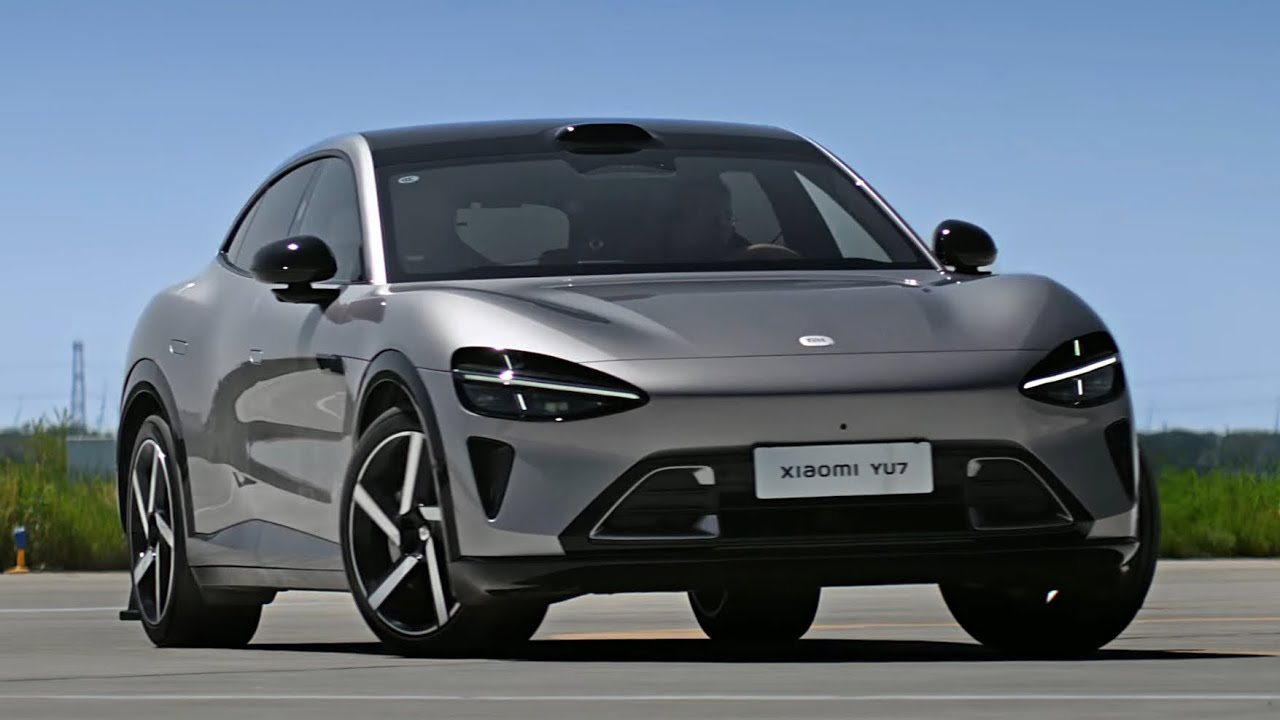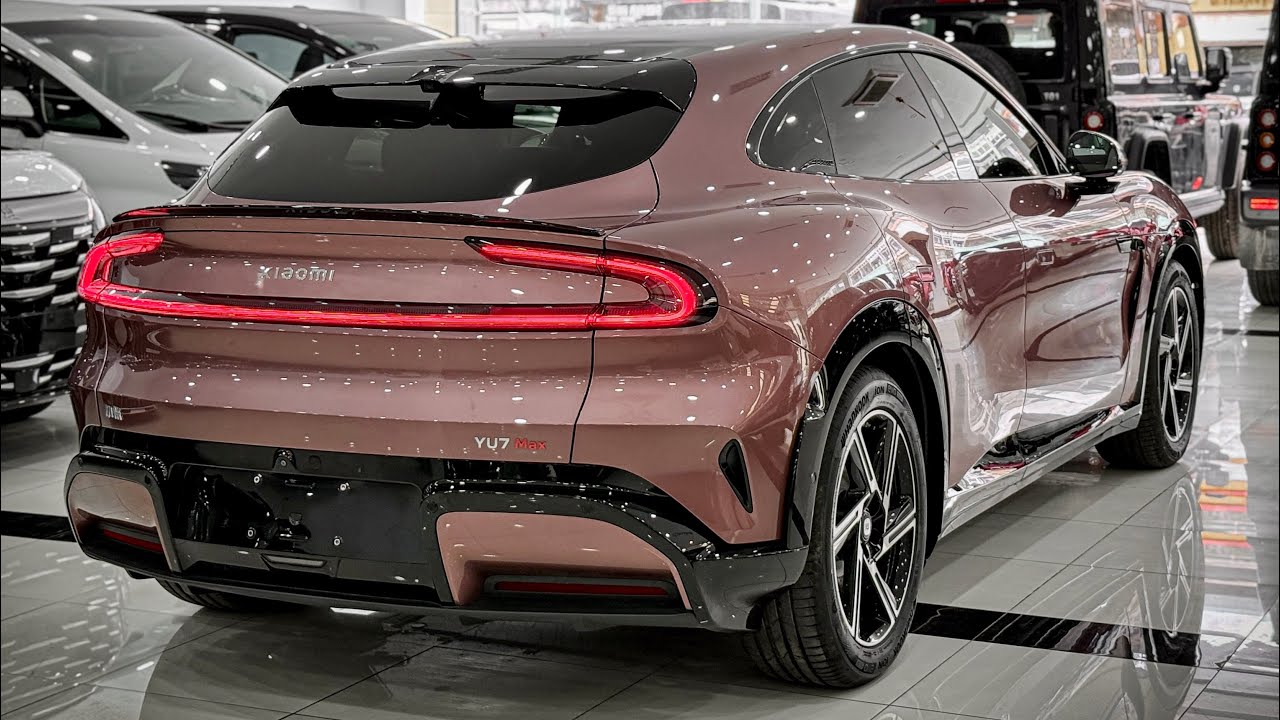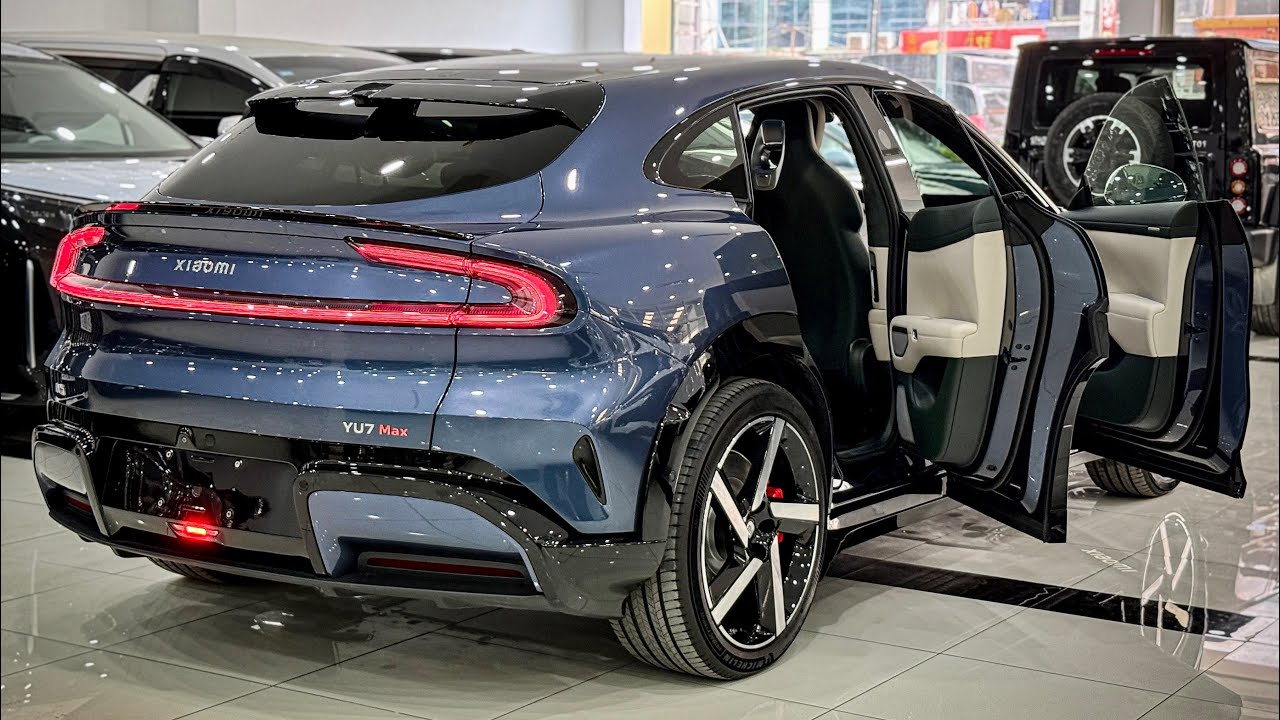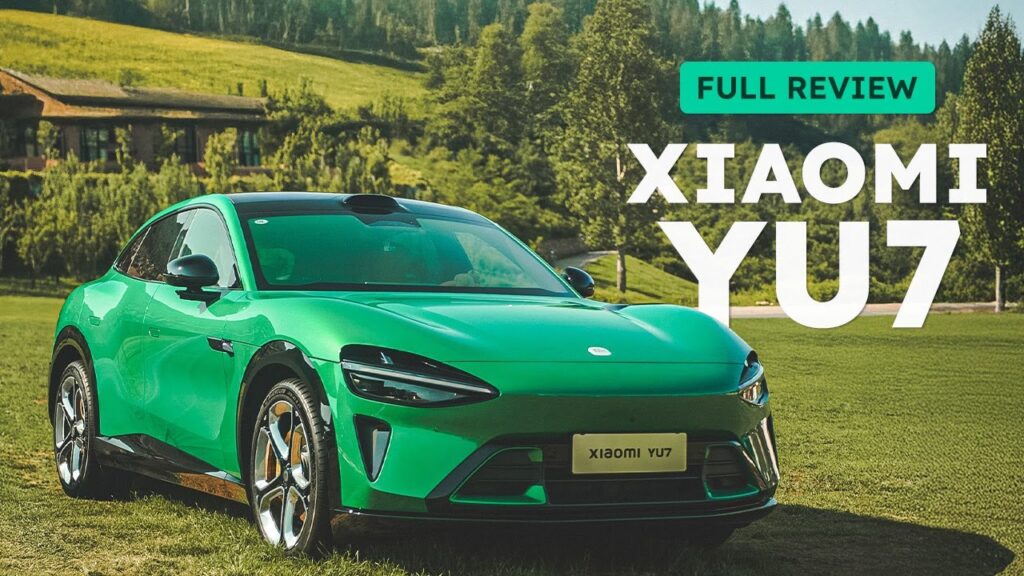Over the course of the last year, Xiaomi has made a somewhat miraculous transformation: from being just another producer of affordable household electronics and cell phones to becoming one of China’s most acclaimed automakers. Their first model, the Xiaomi SU7 sedan, is currently outselling the Tesla Model 3 and every other electric sedan in its segment in China. Now they’re taking aim at the Model Y with their first SUV, the Xiaomi YU7. I’ve been inside, outside and behind the wheel — and I have plenty of thoughts.
A Global Launch, A New Direction
If you’d like to drive a Xiaomi YU7 or other Chinese electric vehicles through absolutely stunning landscapes, join the Wheels EV Tour. Our next stop takes us to China’s Sichuan province, with an optional epic adventure to Lhasa in Tibet. That’s right — you can get behind the wheel of these cars in some of the most beautiful places on Earth. The event takes place in mid-August and spots are filling up quickly, so reach out now to tour@wheelsboy.cn to learn more.
Before I share my impressions of the exterior styling on the YU7 (or U7 — I’ll call it both in this review), I want to take a minute and refer back to my review of the SU7.
The Context: Not Just a Copy, But the New Standard

I think a lot of people outside of China saw the SU7 and almost immediately dismissed it as a knock-off of a Porsche. I hope after reading this you understand what a uniquely misguided approach that is — because it misses the point entirely. The takeaway needs to be: in order to compete in the Chinese EV market — the largest and most influential EV market in the world by far — this is the standard you will have to meet in terms of range, price, connectivity and performance. All I can say is: good luck. I still stand behind that statement — but even I admit: my patience has limits — and Xiaomi is testing them.
The mission here at Wheels (on YouTube and beyond) is to give people a glimpse of the exciting things happening inside the Chinese car market — and part of that is challenging the outdated notion that China only produces copy-cat vehicles. Yet here comes Xiaomi with another model, one that looks suspiciously like a foreign luxury car (in this case something like a Ferrari Purosangue). If Xiaomi were just another obscure Chinese brand producing mediocre products, I wouldn’t care. But they’re not. They’re one of China’s most high-profile automakers. Even the Ford Motor Company CEO has been on podcasts talking about how much he enjoyed driving the SU7. Global media from all over the world have come to China to drive Xiaomi’s cars. The event I’m on right now is a global launch event — media from all over the world are here to drive the YU7.
By producing cars that mimic foreign designs, they’re simply giving ammunition to those abroad who already want to dismiss all of China’s car industry as IP-thieves. I think Xiaomi has very strong products and they’ve done a lot to raise the profile of China’s car industry — but the way they’re doing it may come at a cost. That’s my feeling about the context around this design.
Design Impressions: Bold, Stylish and Aerodynamic

As for the design itself — I absolutely love it. I think it looks fantastic. And I have to tell you: in person it doesn’t look quite as much like a Purosangue as it does in photos. Xiaomi also proved — quite handily with the SU7 — that people are happy to be able to drive a car that looks like a luxury brand for a fraction of the price.
It’s also impossible to deny the fact that a great deal of thought went into this design — including aerodynamics. This car has a drag coefficient of 0.245. It isn’t as low as the Tesla Model Y, but it also isn’t high at all. There’s clever airflow happening — for example around these McLaren-esque front lights where air enters then exits on the top of the hood.
The long hood and relatively low-profile cabin would be familiar in the “super-SUV” segment (i.e., think Purosangue or Aston Martin DBX). But when it comes to midsize electric SUVs it’s positively alien. At nearly 2 m wide and about 1.6 m in height, it looks absolutely sinister when parked next to other more traditionally shaped – let’s be honest – computer-mouse shaped electric SUVs.
It comes with either 19”, 20” or 21” wheels. Ours had the 21s. There’s a reason most automakers don’t design their SUVs this shape — it compromises interior space. Xiaomi however claims the YU7 has the world’s highest “volumetric efficiency”. What that means in terms of real-world numbers is: 678 L of space behind the second row, and up to 1,758 L when you fold them down. These aren’t class-leading numbers, but they’re not back-of-the-class either. Part of that volumetric efficiency is a well-packaged powertrain, using a “cell-to-body” battery structure (i.e., the battery is an integral part of the vehicle’s body). That means it does have a frunk. You can open this frunk lid via physical key, app, button on the side — or even voice commands. Inside the frunk is 141 L of space — considerably larger than the 117 L of the Tesla Model Y. It’s covered by an equally massive one-piece clamshell hood. Others have already pointed out: this thing’s going to be a nightmare at the factory, because if it’s not installed perfectly it’s going to look misaligned on the outside. And replacing it after an accident is going to be expensive. One piece of good news though: it has adjustable opening height (like a tailgate) so you can worry less about overhead clearance.
Powertrain, Range & Charging: Impressive Numbers
The battery pack (in that cell-to-body structure) comes in two main forms:
The base rear-wheel drive standard car & the dual-motor Pro: both use a 96.3 kWh LFP (blade) battery supplied by BYD with claimed CLTC ranges of 835 km and 770 km respectively.
The Max model uses a 101.7 kWh NMC pack with a claimed CLTC range of 760 km.
All version of the YU7 use an 800-V charging architecture. The LFP cars (max power 250 kW) can charge from 10 % to 80 % in 21 minutes. The NMC Max version (max charging 480 kW) can do the same in just 12 minutes.
Interior Experience: High Tech, Premium Feel
The SU7’s interior was very nice — but it looked like something designed by Tesla and polished by Porsche. The YU7, on the other hand, gives you genuinely new experiences while also taking all the things that were great about the SU7 and cranking them to 11.
The first thing you’re going to notice (because it’s over 3 feet wide!) is the Xiaomi “HyperVision” HUD — the huge heads-up display at the bottom of the windshield. Initially I thought it was gimmick, but in practice it’s incredibly high-clarity, very customizable, and well done. You even have a little assistant (choose an adorable otter or an adorable cop-bar) that swings around corners. Honestly, it’s adorable — and I suspect it will sell lots of cars.
Another new feature: the glass roof that can transition from transparent to almost opaque at the touch of a button. The change starts from the very edges of the glass and completes in about 3 minutes.
And something that really stood out: the magnetic attachment system inside the cabin. On the SU7 you had a limited number of attachment points (for phone mounts etc); with the YU7 they’ve expanded that dramatically — powered mount points, a removable camera, a “magic” button you can place anywhere which controls dozens of features (seats, A/C, lighting, windows, audio). All part of Xiaomi’s latest OS, which also includes what they call the “Hypertask” system — set a scenario (e.g., when driver sits down, turn on cooled seats + set preferred volume + change lighting) and it happens automatically. The car also interacts with Xiaomi’s ecosystem: you could set the car so that when you reach home the A/C inside your Xiaomi house unit is already at your preferred temperature. Smart home integration at this level is rare among automakers.
Other upgrades: dual wireless charging pads rated at 80 W, a 25-speaker sound system, zero-gravity front seats, numerous powered magnetic mounts and even a modular magnetic rail behind the rear seats for add-on modules like lights. Rear leg-room slightly larger than the Tesla Model Y, seat-back reclining to 135°, big glass roof, premium materials — in short: very high-end feel.
Driving Impressions & Handling

The standard rear-wheel drive version of the YU7 comes with a single rear motor producing 235 kW and 528 Nm of torque, enough to sprint to 100 km/h in 5.9 seconds. The Pro model (dual-motor) ups this to 365 kW and 690 Nm, hitting 100 km/h in 4.3 seconds. The Max version produces 508 kW and 866 Nm, with a 0-100 km/h time of just 3.2 seconds.
All versions use a double-wishbone front suspension and five-link rear. The Max gets dual-chamber adjustable-stiffness and height air suspension standard. CDC (constant damping control) is standard across all trims. Ride height for the air suspension on the Max: standard 180 mm, up to 222 mm (under 50 km/h).
My time behind the wheel was limited to public mountain roads (so I couldn’t push it to the absolute limit), but even so the experience impressed me. The YU7 drives like a lifted SU7: light on its feet, agile for an SUV, with accurate steering, good feedback, and better cornering feel than almost any Chinese electric SUV I’ve driven. It doesn’t feel quite as planted as a high-performance Model Y (especially the top versions) but that is in many ways a good thing — the steering is lighter and the front feels less weighed down. In a country where drivers often complain that the Model Y’s steering is too heavy in all modes, the YU7’s mode-switching (Eco → Comfort → Sport → Sport+) makes a noticeable difference. The air suspension in the Max keeps body roll in check on corners and forward/rear motions (brake dive/acceleration) are well managed. This thing looks like a wagon more than an SUV — and thankfully it drives more like a wagon too. Relieved would be an understatement.
Another standout: the accelerator pedal sensitivity. On the SU7 Xiaomi essentially said: “If you’re not using it properly it’s going to make everyone in the car uncomfortable — but if you are in a performance driving situation and you want quick response, you’re going to get it.” The YU7 retains that feel. And for city driving, there’s a “Motion Sickness Relief” mode — ultra-gentle regen and throttle mapping to keep passengers comfortable. I haven’t seen that in another EV.
How It Stacks up Against the Tesla Model Y
To put the YU7 in proper context I have to talk about its competition — the Tesla Model Y. What’s special about the Model Y is that, despite being an electric SUV, it actually feels and drives more like a sedan — which gives you confidence in corners. As I passed a Model Y on the road I realized: the YU7 does deliver that same sense of lightness at the front end and agility — and the steering is better than almost every Chinese electric SUV I’ve tried. Does it beat the Model Y outright? Not in every metric — it’s not quieter, necessarily, or as refined in every detail. But in the context of what you pay and what you get, it sets a new bar.
I’m not going to bother calling the YU7 a “Model Y killer” — if that overused phrase were accurate then the Model Y would have already been dead many times over. But mark this: just as the SU7 set a new bar for electric sedans, the YU7 is doing the same for electric SUVs — and that’s a bar that automakers, foreign and domestic, will have a hard time getting over.
Final Thoughts
Xiaomi’s transformation from smartphone and electronics maker into a serious EV automaker has been incredibly fast and impressively executed. The YU7 encapsulates what the company stands for: bold design, advanced tech, aggressive pricing and ambition. It may still carry the stigma of “Chinese SUV” for some overseas buyers, electric SUV China but in China — and increasingly abroad — it’s a product ready to compete.
If you’re in the market for an electric SUV and willing to consider alternatives to established brands, the Xiaomi YU7 deserves serious attention. It’s not perfect, and time will tell how durability, service and global availability play out — but from this early drive, one thing is clear: the electric-SUV race just got a lot more interesting.
Related article
- The 5 Cheapest Chinese Family Cars Coming to Europe and the USU
- New 2025 Fiat Panda; Everything You Need to Know
- New 2024 Volkswagen Taos: Price, Release Date & key Specs
- New (2024) Ford Mustang: Pricing, Interior & Performance
- New (2024) Ford F 150 Tremor Pricing, Released & Full SpecsSpecs






